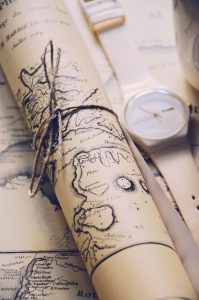
Overview
This post will consist of a discussion of my final project for History 680: Digital Humanities. I have attached a URL like to the project here:
https://chesterpelsang.org/ExhibitDisplayofLouisianaMaps/
This is a project focused around working with digitized collections from the Library of Congress (LOC) website. There are two main aspects to this project: the first is the metadata used within the project. The second aspect is the interactivity of the website/collection itself.
Aim of the Project:
Overall, the aim of this project has not changed – to create an interactive project that can show the evolution of mapping. The audience for this project has also been constant since the beginning: students of a high school level. In other words, I have designed this project to be informative and interactive for a high school audience. The main goal of this project is to push students to interact more with online and digitized collections. Therefore, linking the project with the Library of Congress database allows for students to explore other digitized collections. In the end, I hope that my project allow students to explore the world of digital resources and digital collections. In order to see the full collection from the “Timeline of Images” page on the project site, click the main title on the first page. Thereafter, if one wishes to see the full catalog of a map, simply click the map’s author’s name found in the bottom right-hand corner.
This setup of intractability within the project (being able to move and manipulate the timeline) also allows students to realize how digital software can add to our understanding of historical objects. Simply, digital projects such as this creates the opportunity for students to debate and discuss how digital presentation of historical objects influences argumentation and perception of the past.
The Sources:
The main source was the LOC database of Louisiana maps. It can be found here: https://www.loc.gov/collections/louisiana-european-explorations-and-the-louisiana-purchase/
This source provided two main pieces to this project. The first was the metadata. I had to narrow down which metadata to include in this project. Therefore, for the purposes of the high school student audience, I added important elements like data, creator, and LOC subject heading. The subject headings were added because they offer an opportunity for more research on the part of the student. Using the LOC catalog browse page (https://catalog.loc.gov/vwebv/searchBrowse) one is able to use subject headings for the search parameters. Students would simply copy and paste the subject heading from the project site into the LOC search bar to find more maps and literature of the same topic.
The second piece of importance was the scanned images of the maps. These were high resolution scans that allows for close examination. I was successful in pinning the high resolution jpeg to the object catalog within the project site.
The Software:
There were three main pieces of software used for this project. The first was Omeka. This is a collection management software that allows for the organization of multiple objects and their accompanying metadata.
The second piece of software is Timeline J/S. This is an external (separate from Omeka) java script software that allows for the creation of interactive timelines via a comma separated values (or CSV) spreadsheet. Once I inputted the metadata from the LOC library into the CSV, I was able to HTML code the timeline into the Omeka site. This was done by creating a separate page on Omeka and then copying and pasting the code from the Timeline J/S site. Moreover, I was also able to code links within the timeline itself. Clicking on the author’s name for each map will direct the visitor to the LOC catalog page for the map.
One of the last pieces of software used was the CSV spreadsheet. After gathering all the relevant metadata, I was able to convert my work into a CSV format, eliminate any extra commas, and then use the CSV plug-in on Omeka to upload all of my data.
Problems during the Project:
One of the biggest problems (taking up about two days of continual work) was the importation of CSV spreadsheet. Omeka would not tell me the error code after multiple attempts to import the CSV sheet. Therefore, I was able, within file manager, to re-code the Omeka error protocol to show me what was wrong with my spreadsheet. In the end, it was reading that my data was not consistent with CSV. Meaning, I had extra commas or unreadable data that was not importing correctly. I was able to clean my data and have it import.
Another obstacle while building this project was the Omeka thumbnails were not not displaying. This was because I was not classifying the URL link correctly during my CSV upload. I had to classify the link as a “file”, telling Omeka that the link was to be opened and pinned to the object item page.
What I Discovered About the Sources:
Overall, what I discovered about the maps is that there were bundles of map making during certain years. Pre-1770s we see very few maps, but during the expansion of British colonization in the 1700s, maps started to be produces with more regularity.
Moreover, one can also start to see common authors between maps. Some authors were more prolific than others, showing how most authors were Spanish then French then British.
Lastly, these maps can also tells us an interesting story of digitization. There are many maps that do not have a full description. Therefore, we are left to study the map and try and make out important geographical features and meanings. In the end, this also tells us that digitization does not answer questions, but, perhaps, adds more layers to an already complex study.